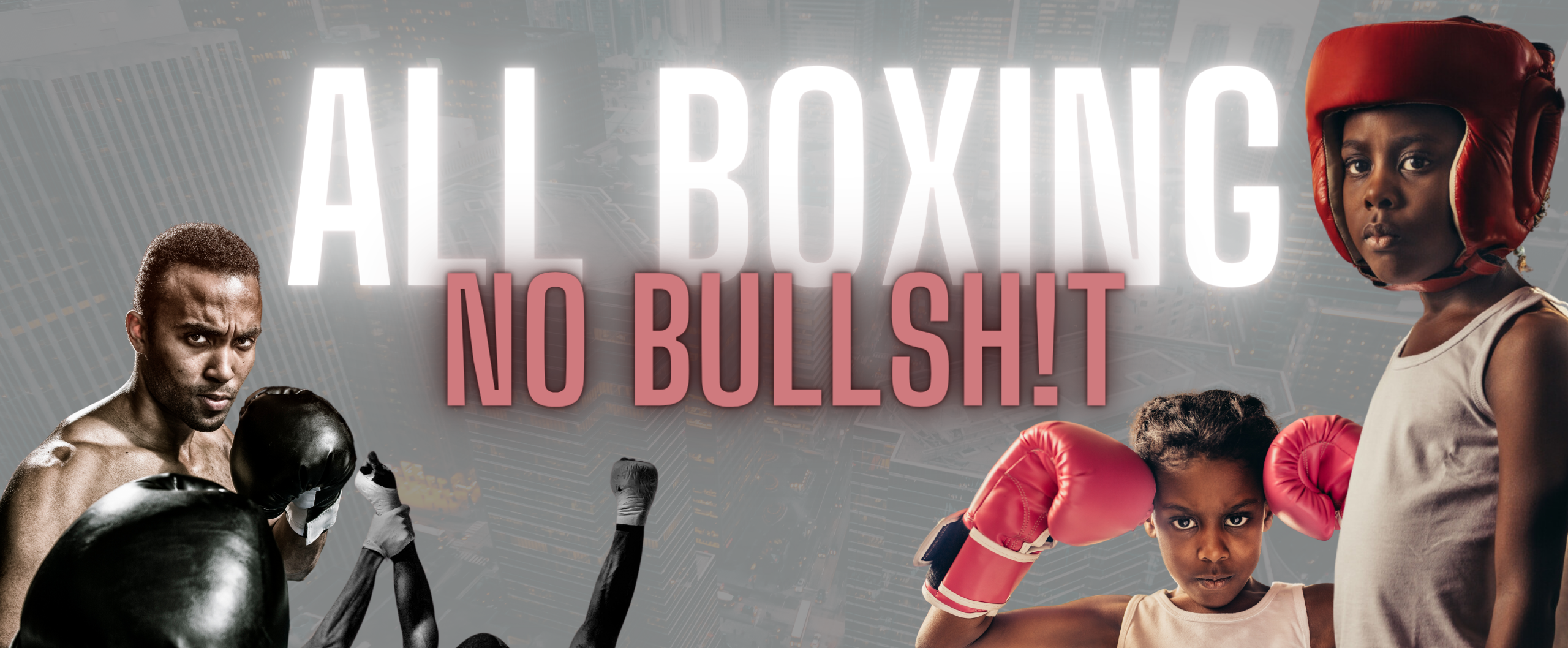Boxing History
Leotis Martin has beaten the fearsome heavyweight beast
Published
6 hours agoon
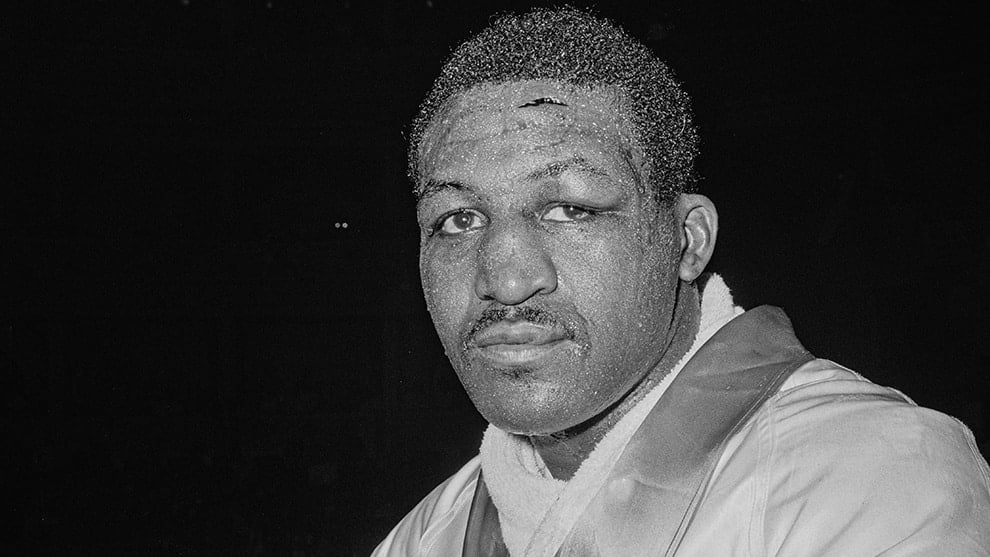
Name and surname: Leotis Martin
Born: March 10, 1939 Helena, Arkansas, USA
Died: November 20, 1995
Career: 1962–1969
Record: 36 fights, 31 wins (19 by KO/TKO), 5 defeats (2 by KO/TKO).
Division: heavyweight
Attitude: orthodox
Titles: NABF Heavyweight Champion
Major competitions
Goals scored over: Allan Harmon, Sonny Banks, Von Clay, Amos Johnson, Roberto Davila, Mariano Echevarria, Billy Daniels, Karl Mildenberger*, Thad Spencer, Alvin Lewis (twice), Roger Russell, Sonny Liston **
Lost to: Floyd McCoy, Jimmy Ellis**, Roger Russell, Henry Clark, Oscar Bonavena*
**Former/future world title version holder
*Unsuccessful challenger to the world title version
The boxing story of Leotis Martin
As an amateur, Martin had an outstanding record. In March 1960 at the Golden Gloves Tournament of Champions, he defeated future foe Jimmy Ellis in the 160-pound final and a month later. At the Intercity Golden Gloves (the predecessor of the National Golden Gloves), he won the 160-pound title. He also won the U.S. title in April 1960 again at 160 pounds (youthful Cassius Clay was the 178-pound champion that year), but lost in the semifinals of the U.S. Olympic trials in May. In 1961, he repeated his victory in the Intercity Golden Gloves, but lost in the semi-final of the 1961 national finals.
He moved to Philadelphia and was trained by Yank Durham, who also trained Joe Frazier. Martin had his first professional fight in Canada on January 26, 1962, against American Bobby Warthen, whom he defeated in the final of the Intercity Golden Gloves in 1960. He then crossed the border and scored three wins in Pennsylvania in 1962. In 1963, he won 9 -1 in ten fights and lost by upset KO to 14-14-1 Floyd McCoy.
He won five in a row, but one victory went to Sonny Banks. Banks, a ponderous puncher, knocked down Cassius Clay in the first round of their 1962 fight, only to be stopped in the fourth. On May 10, 1965, Banks was winning against Martin, who was badly shaken in the ninth throw, but delivered a counter right that sent Banks down, hitting his head on the canvas. Banks was taken from the ring on a stretcher. He never recovered and died three days later.
Martin returned to the ring with a victory in October 1965 and scored victories over Von Clay, Amos Johnson, Roberto Davila and Spaniard Mariano Echevarria. Victories over several underdogs pushed his record to 23-1 by June 1967. When Muhammad Ali refused to enlist in the U.S. Army, the WBA stripped him of his title and held a tournament to determine a fresh champion. Martin was selected to compete in the qualifiers, and in the quarterfinals he drew with Jimmy Ellis, his rival from his amateur days, when they lost 1-1 in two fights. It wouldn’t be a heavyweight fight at this point.
They both climbed on the weights. Martin weighed 160 pounds in his first fight and weighed 192 pounds in this fight. Ellis weighed just 157 pounds and was 194 ¼. Ellis won easily. He was too speedy for Martin from the start and Martin staggered repeatedly before the fight was stopped in the ninth throw as blood poured from a cut in Martin’s mouth. Ellis defeated Oscar Bonavena in the semifinals to win the vacant WBA title by majority decision over Jerry Quarry.
Martin came close to disappearing from the heavyweight scene when he lost a split decision to Roger Russell in November 1967. The year 1968 was a period of ups and downs for Martin. In April he went to Germany, where he defeated Karl Mildenberger three times and knocked him out in the seventh round.
The rollercoaster went down when he lost a majority decision to Henry Clark just twenty-two days after the Mildenberger fight, and then it went up again in May when he stopped Thad Spencer in nine rounds in one of the greatest heavyweight fights ever seen at the British ring. It was surprising to see two Americans on top of the Albert Hall show, but the fight will forever be remembered by those who saw it. Down went down the rollercoaster again when Martin was easily beaten on points by Oscar Bonavena in Buenos Aires in September.
Martin was dismissed as unpredictable and once again on the verge of being the favorite in the heavyweight division. But it was another uptick from the rollercoaster of 1968, when he faced Alvin “Blue” Lewis 19-1 in November and stopped Lewis in the ninth round in front of Lewis’ home fans. Lewis demanded a return and in February 1969, again in Detroit, Martin won by split decision. Martin retained Wendell Newton in October and made up for his 1967 loss to Roger Russell in November.
Martin’s fate was about to change. Since losing his second fight to Ali in 1965, Sonny Liston had won 14 straight fights, 13 by KO/TKO, and Martin was selected as winner number 15. They were to meet in Las Vegas on December 6, 1969. twelve rounds, and the inaugural title of the North American Boxing Federation is at stake. Liston had a 20-pound advantage over Martin and was three inches taller. The downside for Liston is that he’s a week away from his thirty-ninth birthday.
Yet Liston was still feared. Martin helped Liston prepare for fights with Floyd Patterson and Muhammad Ali, so he knew Liston well. He decided that if he could survive the early rounds, he would face the weakening Liston and have a chance to win. It didn’t look like Martin’s plan was going to work when Liston dropped him with a left hook slow in the fourth round.
Martin survived the remaining 30 seconds and boxed in retreat, partly as part of his plan but also because of Liston’s hammer jab. Even on the retreat, Martin was finding the mark with his own jab and using his younger legs to set a faster pace than Liston wanted. After eight rounds of chasing the retreating Martin, Liston was ahead with three points on two cards and two points on the third, but Liston was tiring.
In the eighth round, Martin shook off a huge left hook and began to push Liston away with more punches. In the ninth, Martin missed Liston and then delivered a demanding cross to the head that stunned Liston. Martin landed lefts and rights and Liston fell face first onto the canvas, not moving for the 10 second count. This rollercoaster reached fresh heights, with Martin earning the best win of his career and a shot at the world title.
But this is Leotis Martin and the roller coaster has taken one last cruel turn. Martin was diagnosed with retinal detachment and forced to retire. The injury was said to be from the Liston fights, but there was a mention that he was battling an injury from before the Liston fight. Eye surgery has advanced and a detached retina would not automatically be a reason for retirement today, but for Martin in 1969 it meant the end of his career.
During his boxing career from 1964, Martin worked full-time as a mechanic for a manufacturing company and continued this work until his retirement in 1995. In November of that year, he suffered a stroke caused by high blood pressure and complications of diabetes and died at the age of only 56.
You may like
Boxing History
Boxers who won first places in 100 competitions
Published
5 days agoon
November 24, 2024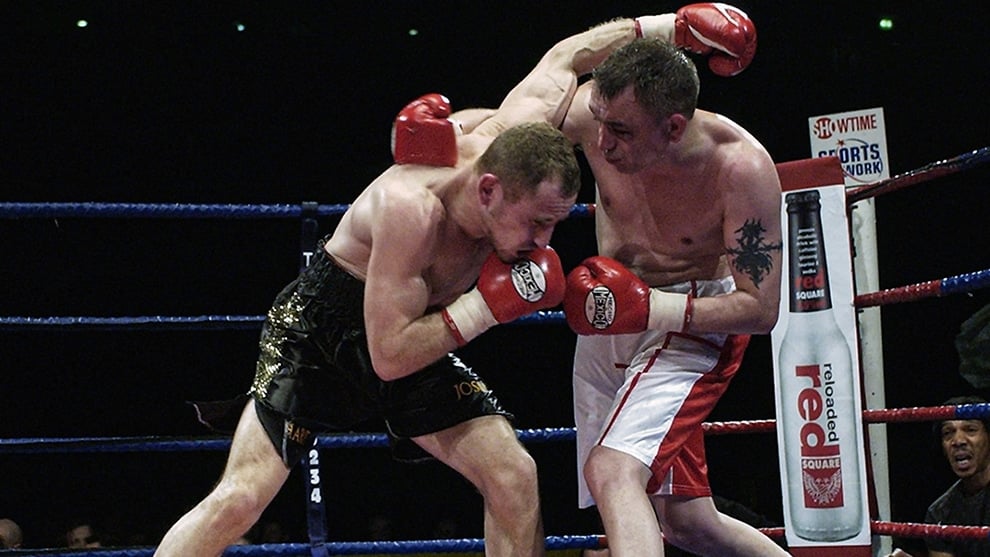
AFTER several years of trying to add competitions between 1900 and 1904, I have now completed my records to include all competitions that have taken place on British soil since 1900. This allowed me to calculate exactly how many professional boxers living in the UK have had 100 or more professional competitions and by my calculations the number is 1,017.
I remember reading BN in 1975, when Battersea’s Ray Fallone had his hundredvol fight and then it seemed like it would probably be the last. However, at the turn of the 20th century, as ‘journeyman’ players became more regular and played an critical role in the game, a further eight emerged, including Winston Burnett, Seamus Casey, Dean Bramhald, Des Gargano and Peter Buckley. . A further 41 people have since joined the lists and Liam Griffiths from Bognor Regis, now competing in 99 competitions, looks set to be next.
Winston Burnett
What every centurion has had in common since Fallone is a very low win rate because they were all journeymen. This is a huge change from what was there before. Only 16 boxers who turned professional between 1940 and 1979 became centurions, but 10 of them had winning records, and of the six who did not, two of them, Tommy Tiger and Jack Johnson Cofie, were immigrants, which represents a warrior category that often appeared on the right side of the bill.
As you might expect, most of the centurions, 678 in all, turned professional in the 1920s (444) or 1930s (234), and 366 of these boys won more than half of their competitions.
Three players, Nipper Shaylor from Birmingham, Herbie Fraser (Westbourne Park) and Alf Barrett (Coatbridge) managed to fit their entire career into a four-year period. The best of them was Herbie Fraser. His 123 competitions lasted from 1931 to 1935, and he retired at the age of 22. Nipper Shaylor had 110 contests and less than 40 of them were entered in the pages BNshowing how hard it is today to put these records together.
Seaman Tommy Watson of Newcastle, who was British featherweight champion from 1932 to 1934 and who fought the great Kid Chocolate for the world title at Madison Square Garden in 1933, had the highest win rate of any centurion, winning 113 of 124 contests over a 10-year career. Right behind him are Hal Bagwell, Jock McAvoy, Jimmy Wilde, Peter Kane, Tom Smith (Sunderland) and the great Len Harvey.
There are 78 fighters who have fought at least two hundred fights, and 10 of them have fought three hundred or more. Inevitably at the top of the list is Leicester’s Len Wickwar with 470. Len has fought more times than any other boxer, in any era, anywhere in the world and is in a league of his own. Len died in 1980 on exactly the same day as his stablemate, George Marsden of Nottingham, who is second on my list with 375 competitions. The latest player to crack the top 300 is, of course, Nuneaton’s Kristian Laight.
Before 1925, it was quite reasonable and normal for soldiers to continue an busy boxing career, and there were many excellent fighters in both the Navy and Army, among them 14 centurions. If I were to single out just one of them as representative of their type, it would be Corporal Zimmer of the Hampshire Regiment, serving from 1909 to 1922 and winning 75 of his 151 competitions. He boxed everywhere. Another profession that spawned centurions was coal mining.
There were many of them from South Wales, the Midlands and the North East, but despite long recordings they didn’t make much money from the game, and many of them I got to know personally in the 1970s. They were proud of their careers and are still proudly on my centurion list.
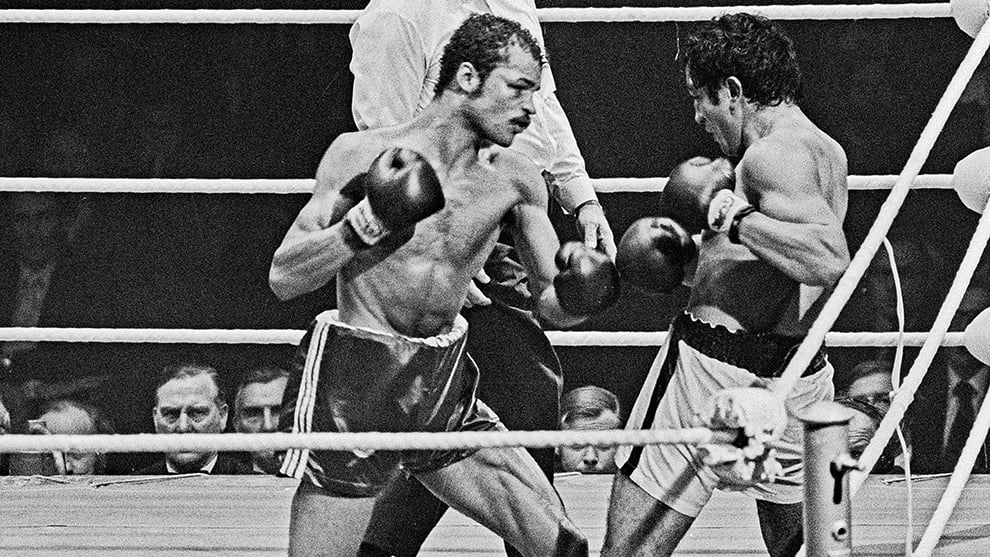
On October 20, London’s Connaught Rooms restaurant hosted a full house for a luncheon in tribute to John Conteh, MBE.
The event was organized by London-based EBA Secretary/Treasurer Ray Caulfield and long-time LEBA benefactor Scott Ewing (John is LEBA Vice-President) to mark the 50th anniversary.vol anniversary of John winning the vacant WBC delicate heavyweight world title after defeating Argentine Jorge Ahumada on October 1, 1974.
But as Scott Ewing said in his opening speech, it was much more about John Conteh the person than the boxer. “John did so much for so many people,” Scott said.
He then described John’s work with Alcoholics Anonymous (“He brought so many back”) and the Variety Club, noting that John was only the second person (besides Jimmy Tarbuck) to be named captain of the Variety Club golf team. “He travels all over the country visiting EBA – he’s a great ambassador,” Scott said, explaining that John was also a major supporter of the Ringside Charitable Trust.
MC John McDonald did a great job all afternoon. He introduced many boxing personalities including world champions Frank Bruno MBE, Steve Collins MBE, Maurice Hope MBE and Colin McMillan BEM. (Bruno received thunderous applause, as did Michael Watson MBE.) There were also stars from other sports, including: Charlie George (football) and Phil Taylor (darts). As you can imagine, LEBA was well represented. I was also delighted to see EBA Croydon chairman Pat Doherty and Brighton stalwart Harry Scott.
Former European and Commonwealth heavyweight champion (and LEBA member) Derek Williams paid tribute to Conteh, describing him as a “true boxing legend”. “Your name has stood the test of time,” Derek said, noting that John had to overcome many challenges and obstacles, and in doing so, he “paved the way for other black warriors.” He said John had “made his mark on boxing” and described him as “boxing royalty”, concluding simply: “Thank you for everything you’ve done.”
We saw a video of John in action – two KOs early in his career, his 12thvol– a round of stoppage of the German Rudiger Schmidtke in the fight for the European delicate heavyweight crown, his two fights with the tardy Chris Finnegan (the first brought John the Briton and Commonwealth titles). And finally, Jorge Ahumada scores those great points.
I was ringside at Wembley that night. As for the BN staff, I was tasked with doing a preview of Conteh-Ahumada and I chose Ahumada, but ended with, “Prove me wrong, John.” And I have never been happier to be proven wrong! John’s brilliant performance really made me feel proud to be British.
A segment of John’s This Is Your Life (a very popular long-running TV show) was also filmed, in which Paul McCartney paid tribute to his fellow Liverpool native, and tributes from boxers who were unable to attend the event were also filmed. These included former world champions Johnny Nelson, Ricky Hatton and Jim Watt – as well as a tribute from boxing writer and broadcaster Adam Smith, who described John as “one of the greatest British fighters produced since [Second World] War.”
British boxer John Conteh during his WBC delicate heavyweight title fight against Argentine Jorge Ahumada at Wembley, October 1, 1974. Conteh won the fight on points and was crowned world champion. (Photo: Keystone/Hulton Archive/Getty Images)
There was a very successful auction, conducted partly by Ray Caulfield and Scott Ewing and partly by John himself. John has an excellent reputation as an auctioneer at charity events and was in excellent shape. Entertainment was provided by Muhammad Ali Jr, who had everyone laughing with his impressions of his father, and comedian Bobby Davro.
As a nice gesture, John was given his WBC championship belt back – and in a low, modest speech, John thanked everyone for coming. He thanked his family, of which there was a lot – including his wife Veronica (they have been together for 50 years) and children James and Joanne. He also thanked Charles Atkinson, coach at Kirkby ABC, who started John on the path that ultimately led to the world title.
A wonderful tribute to a true boxing legend – and congratulations are in order to Ray Caulfield and Scott Ewing. These events don’t organize themselves
Boxing History
On this day: Lennox Lewis righting the wrong he committed in South Africa by hitting out at Hasim Rahman
Published
2 weeks agoon
November 17, 2024
Talk about pole work or a knockout when it matters most. Revenge Knockout. On this day in 2001, heavyweight great Lennox Lewis did the job he should have done when he first met Hasim Rahman. Instead, in April this year in South Africa, an ill-prepared (mainly for the altitude) Lewis was run over by a huge right hand from “Rock” Rahman. Rahman’s fifth-round KO victory is now seen as one of the greatest upsets in heavyweight history.
But Lewis, who ended up brawling with Rahman in a TV studio as the second fight approached, had sweet revenge. And it meant so much to Lewis, an avid chess player, that his KO would come sooner than Rahman’s.
They met at Mandalay Bay in Las Vegas, and the fight was dubbed “The Final Judgment”. Lewis scored his most satisfying KO of his career.
Lewis, this time fit and piercing, was seven years older at 36 and yet, as it turned out, still close to his best. Rahman (35-2(29)) held the title for seven months and then it was all over. Lewis, 38-2-1(29) entering, lowered the sonic boom in round four.
After inflicting a minor cut above Rahman’s eye in the first round, Lewis also went through the next two rounds. Then, in round four, Lewis landed a brutal left-right combination to the head that sent Rahman’s senses into orbit. Rahman fell, tried to get up, and then fell again. It was the kind of ugly, humiliating knockout defeat that all fighters dread.
Lewis argued with him after the fight, calling Rahman “Has-been Rahman”.
Lewis exacted savage revenge, and while Rahman’s KO was stunning in the first fight, Lewis’ thunderous and thunderous KO made us all almost forget what happened in the first fight. Lewis scored many great knockouts during his ring career, including knockout/stoppage wins over Razor Ruddock, Frank Bruno, Andrew Golota, Shannon Briggs, Michael Grant, Frans Botha and Mike Tyson.
But the ice work Lennox did on that day some 23 years ago is one of his most special.

Tito Mercado CALLS OUT Keyshawn Davis to SETTLE BEEF; DISSES Devin Haney “TRYING TO STAY RELEVANT”

TENSE! • AnEsonGib vs Slim Albaher FACEOFF | Ft. Deji, Chase DeMoor Misfits Boxing

Oleksandr Usyk Epic Song After Anthony Joshua Face Off
Trending
-
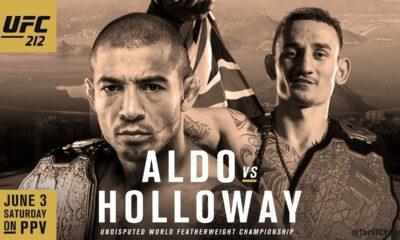
 MMA6 months ago
MMA6 months agoMax Holloway is on a mission at UFC 212
-
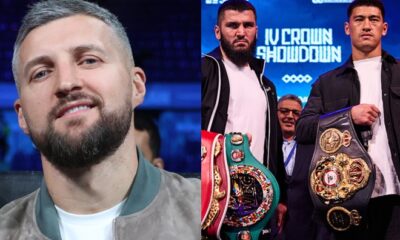
 Interviews2 months ago
Interviews2 months agoCarl Froch predicts that Artur Beterbiev vs Dmitry Bivol
-
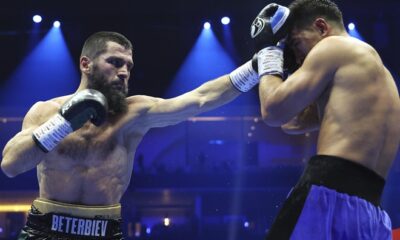
 Interviews2 months ago
Interviews2 months agoArtur Beterbiev vs Dmitry Bivol
-
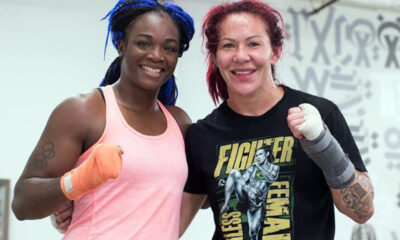
 MMA7 months ago
MMA7 months agoCris Cyborg ready to add a UFC title to her collection
-
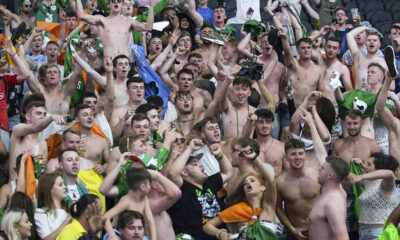
 MMA7 months ago
MMA7 months agoThe Irish showed up in droves at the Mayweather-McGregor weigh-in
-
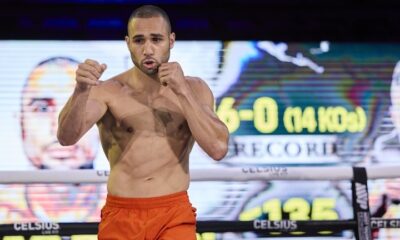
 Boxing4 months ago
Boxing4 months agoLucas Bahdi ready to test his skills against Ashton Sylve
-
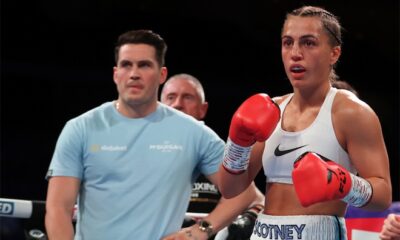
 Interviews7 months ago
Interviews7 months agoI fell in love with boxing again
-
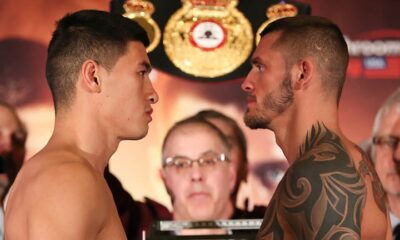
 Opinions & Features2 months ago
Opinions & Features2 months agoDmitry Bivol: The story so far

